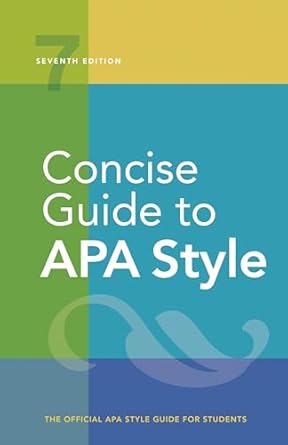[toc]
biasfree language apa guidelines commentary
Concise Guide to APA Style: 7th Edition (OFFICIAL)
Page 79 Review
Bias-Free Language Guidelines: A Commentary
The American Psychological Association (APA) emphasizes the importance of bias-free language in scholarly writing.
The guidelines, as outlined, aim to promote fairness, respect, and accuracy when referring to individuals and groups.
This commentary delves into the significance of these guidelines and their practical implications for writers.
The Core Principles: Respect and Accuracy
The central tenet of the APA’s bias-free language guidelines is the commitment to:
“the advancement of science and the fair treatment of individuals and groups.
These principles require that students and authors who use APA Style avoid perpetuating demeaning attitudes in their writing.”
This commitment underscores the responsibility of writers to avoid language that could be interpreted as prejudicial or biased.
The guidelines specifically address various personal factors, including:
Age
Disability
Gender
Participation in research
Racial or ethnic identity
Sexual orientation
Socioeconomic status
and intersections of these.
Why Bias-Free Language Matters
Using bias-free language is not merely a matter of political correctness; it is crucial for several reasons:
Promoting inclusivity: Bias-free language fosters a sense of belonging and respect for all individuals, regardless of their background or identity.
Enhancing objectivity: Biased language can cloud judgment and distort the presentation of information.
Objective language ensures that research findings and ideas are presented fairly and accurately.
Avoiding perpetuation of stereotypes: Biased language can reinforce harmful stereotypes and contribute to discrimination.
Strengthening credibility: Using inclusive and respectful language enhances the credibility of the writer and the research being presented.
Practical Guidelines for Implementation
The APA guidelines offer specific recommendations for avoiding biased language in various contexts.
These recommendations include:
Using Affirming and Inclusive Language
Instead of using potentially offensive or stigmatizing terms, writers should use affirming and inclusive language.
For example, instead of saying “the disabled,” it is more appropriate to say “people with disabilities.”
Avoiding Generalizations and Stereotypes
Writers should avoid making generalizations or stereotypes about individuals or groups.
Each person is an individual, and it is important to respect their unique identity.
Being Specific and Accurate
When referring to specific groups or individuals, writers should strive to be as specific and accurate as possible.
Avoid using vague or ambiguous terms that could be misinterpreted.
Considering Intersectional Identities
It’s important to remember that individuals often have multiple identities that intersect and influence their experiences.
Writers should be sensitive to these intersectional identities and avoid making assumptions based on a single identity category.
As the text mentions:
“writers should use affirming and inclusive language…on the basis of age, disability, gender, participation in research, racial or ethnic identity, sexual orientation, socioeconomic status, or some combination of these or other personal factors (e.g., marital status, immigration status, religion).”
The Importance of Self-Reflection and Feedback
The APA guidelines emphasize the importance of self-reflection and feedback in ensuring bias-free language.
As the text suggests:
“Just as you have learned to check what you write for spelling, grammar, and wordiness, practice rereading your work for preconceptions about groups of people.
When possible, ask people from the groups about which you are writing to read and comment on.”
Writers should regularly review their work for potential biases and seek feedback from others, especially from individuals who belong to the groups being discussed.
This process helps identify and correct unconscious biases that may have been overlooked.
Conclusion
The APA’s bias-free language guidelines are an essential tool for promoting fairness, respect, and accuracy in scholarly writing.
By adhering to these guidelines, writers can contribute to a more inclusive and equitable society.
The commitment to using affirming and inclusive language is not merely a matter of following rules; it is a reflection of a deeper commitment to social justice and respect for human dignity.
By actively working to eliminate bias from our language, we can create a more just and equitable world for all.
Continuing to update these guidelines and promote awareness, including through resources like the APA Style website (mentioned as “https://apastyle.apa.org”), ensures that researchers and writers have the tools needed to foster inclusive communication.
Buy full ebook for only $18: https://www.lulu.com/shop/american-psychological-association/concise-guide-to-apa-style-7th-edition-official/ebook/product-rmzpq54.html?page=1&pageSize=4
Biasfree Language Apa Guidelines Commentary
Read more: APA Style: DOIs and URLs in References Explained</
Read more: Empathy & Perceptual Speed: Figure 7.9 Analysis</


Leave a Reply